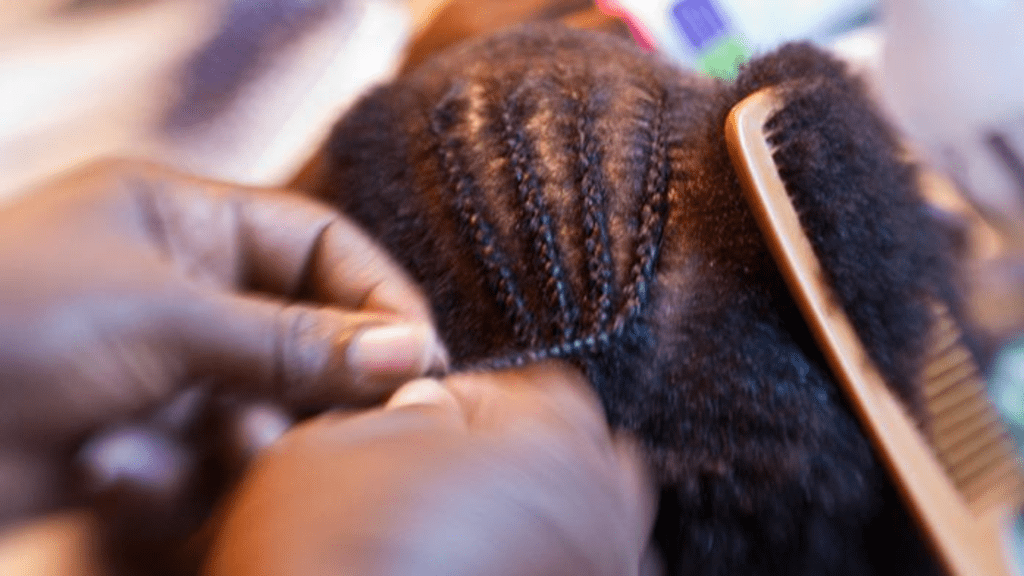The rise of hair relaxer lawsuits has brought attention to a new health risk for African American women. This article will explore what hair relaxers are, why African American women are at risk, the ingredients and workings of hair relaxers, and the associated health risks. We will also delve into the signs and symptoms of hair relaxer related health issues, steps to take if you have experienced health issues from hair relaxers, and how to protect yourself from the risks. We will provide insights on safer alternatives and precautionary measures. As more and more lawsuits emerge, it’s crucial for African American women to be informed and empowered to make safe choices when it comes to hair care.
What Are Hair Relaxers?
Hair relaxers are chemical products commonly used by African American women to straighten their hair and manage its texture.
The primary purpose of hair relaxers is to alter the natural curl pattern of the hair, providing a straighter, smoother appearance. They work by chemically relaxing the natural curls, making the hair more manageable and easier to style. Commonly used chemicals in hair relaxers include sodium hydroxide, guanidine hydroxide, and ammonium thioglycolate, which alters the structure of the hair shaft. Brands like Mizani, Affirm, and Revlon Realistic are popular choices for African American women seeking to straighten and manage their hair texture.
Why Are African American Women at Risk?
African American women face heightened risks associated with the use of hair relaxers, as indicated by scientific research and studies conducted by various institutions and organizations.
What Are the Ingredients in Hair Relaxers?
The ingredients in hair relaxers often include potent chemicals that can pose risks such as chemical burns and other adverse reactions, prompting regulatory attention and advocacy efforts.
These chemicals, such as sodium hydroxide, calcium hydroxide, guanidine carbonate, and lithium hydroxide, are known for their alkaline nature and strong caustic properties. They work by breaking down the hair’s protein structure, leading to straightened hair. Despite their effectiveness, prolonged exposure to these chemicals can cause scalp irritation, hair breakage, and even severe burns. As a response to these health concerns, regulatory bodies have imposed guidelines on the use and concentration of these chemicals in hair relaxers. Legislation has been introduced to ensure that manufacturers adhere to strict safety standards and provide clear warnings about potential risks to consumers.
How Do Hair Relaxers Work?
Hair relaxers work through a chemical process that alters the structure of the hair, typically involving the use of specific compounds and formulations developed by various manufacturers and research entities.
The active ingredients in hair relaxers usually include alkali compounds such as sodium hydroxide, calcium hydroxide, or guanidine hydroxide. These chemicals work by penetrating the hair shaft and breaking down the protein bonds that give the hair its natural curl or wave pattern. This process effectively straightens the hair and changes its texture.
Different formulations cater to diverse hair types, ensuring that the hair relaxers offer varying levels of relaxation, as some individuals may prefer a gentler effect while others desire a more dramatic transformation.
What Are the Health Risks Associated with Hair Relaxers?
The use of hair relaxers has been linked to various health risks, including chemical burns, hair loss, allergic reactions, and potential associations with uterine fibroids, raising concerns among health professionals and advocacy groups.
Chemical Burns From A Hair Relaxer
Chemical burns are among the severe health risks linked to the use of hair relaxers, leading to legal actions and litigation efforts to address cases of significant harm and damages caused by these products.
The prevalence of chemical burns resulting from hair relaxers has raised concerns across various sectors, prompting in-depth investigations and expert testimonies to ascertain the extent of harm and potential liabilities. Court proceedings have shed light on the profound impact of these burns on individuals, families, and communities, emphasizing the need for rigorous safety regulations and consumer awareness.
Advocacy efforts geared towards educating consumers and holding manufacturers accountable have become pivotal in addressing the lasting implications of chemical burns. The pursuit of justice for victims has propelled discussions on product labeling, chemical compositions, and industry practices, aiming to prevent future incidents and safeguard public health.
A Hair Relaxer Causes Hair Loss
Hair loss is a commonly reported issue associated with the use of hair relaxers, triggering regulatory considerations and public health advocacy efforts to address the extent of this concern and its impact on individuals.
This phenomenon has prompted researchers to delve into the intricate patterns and implications of hair damage caused by chemical straightening treatments. Scientific findings have unveiled a complex interplay of factors, including the concentration of active ingredients, frequency of application, and individual susceptibility, shedding light on the multifaceted nature of this issue. Notably, regulatory actions have been implemented to monitor the composition and labeling of hair relaxers to safeguard consumer well-being. Advocacy initiatives have emerged to support affected individuals and raise awareness about healthier alternatives for hair care.
Allergic Reactions From A Hair Relaxer
Allergic reactions to hair relaxers have been documented, highlighting concerns about chemical sensitivities and the need for industry and regulatory responses to address the prevalence and impact of these adverse responses.
It is essential to acknowledge the potential risks associated with these products, as certain individuals may develop allergic dermatitis, which can manifest as redness, itching, swelling, and even blistering of the scalp and surrounding areas. Scientific research has identified specific chemical components, such as sodium hydroxide and calcium hydroxide, as common culprits in triggering allergic reactions. Regulatory measures, including mandatory labeling of potentially allergenic ingredients, are critical to enable consumers to make informed choices and protect themselves from potential harm.
Uterine Fibroids
Research suggests potential associations between the use of hair relaxers and the prevalence of uterine fibroids, prompting investigations into the endocrine system impacts and health implications of such correlations.
Studies have indicated a potential link between the chemicals in hair relaxers and disruptions in hormone levels, specifically estrogen and progesterone, which are known to influence the development and growth of uterine fibroids. Research has explored the role of phthalates, commonly found in hair relaxers, in altering hormonal balance and affecting the reproductive system.
The impact of these chemical compounds on the endocrine system has raised concerns regarding their potential contribution to the development and progression of uterine fibroids, prompting further investigations into their health implications.
What Are the Signs and Symptoms of Hair Relaxer Related Health Issues?
Recognizing the signs and symptoms of hair relaxer related health issues is crucial, with indicators including scalp irritation, hair breakage, and thinning hair often signaling potential concerns and adverse effects.
Scalp Irritation
Scalp irritation is a common concern associated with the use of hair relaxers, reflecting the impact of chemical exposure and the need for industry and regulatory measures to address the prevalence and impact of this issue.
Many individuals who regularly use hair relaxers may experience symptoms such as redness, itching, and burning sensations on the scalp due to the strong chemical compounds present in these products. This issue has garnered attention from regulatory bodies, prompting them to impose strict guidelines and protocols for the formulation and labeling of hair relaxers.
Scientific research has also delved into the long-term effects of these chemicals on the scalp and hair follicles, emphasizing the importance of safer alternatives and proper usage techniques to minimize the risk of irritation and damage.
Hair Breakage
Hair breakage is a significant concern linked to the use of hair relaxers, indicating potential chemical damage and prompting industry and regulatory considerations to address this prevalent issue.
The patterns of hair breakage associated with the use of hair relaxers reveal a complex interplay of chemical interactions and structural vulnerabilities in hair strands. Regulatory responses have sought to address this issue through setting standards for the ingredients and formulations of hair relaxers, aiming to minimize the risk of damage to hair fibers. Meanwhile, industry perspectives emphasize the importance of product innovation and education to enable consumers with the knowledge to choose safe and effective hair relaxers that minimize breakage.
Consumer experiences reflect a growing demand for natural and nourishing ingredients, indicating a shifting preference towards gentler alternatives in the quest for healthy and resilient hair.
Thinning Hair
Thinning hair is a notable consequence linked to the use of hair relaxers, reflecting alterations in hair texture and prompting academic and scientific inquiries into the extent and implications of this phenomenon.
Research has delved into the chemical composition of hair relaxers and their potential impact on hair follicles, shedding light on the mechanisms underlying hair thinning. Scholarly studies have examined the association between prolonged use of hair relaxers and patterns of hair loss, contributing valuable insights into the complexities of this issue.
What Are the Steps to Take if You Have Experienced Health Issues from Hair Relaxers?
If individuals have experienced health issues from hair relaxers, it is essential to consider specific steps, such as seeking medical consultation, documenting adverse effects, and understanding potential legal recourse available for addressing these concerns.
First and foremost, individuals should prioritize their health by seeking professional medical consultation to assess the extent of the health issues and receive appropriate treatment. It is crucial to document any adverse effects experienced, including physical symptoms, changes in hair texture, or scalp irritation, as this information can be valuable when seeking medical assistance and potential legal recourse.
Individuals should be aware of the regulatory guidelines governing the use of hair relaxers, as these products contain chemicals that can pose health risks if not used correctly. Understanding the legal perspectives surrounding product safety and consumer rights can provide individuals with informed options for addressing their concerns, such as seeking compensation for damages or holding manufacturers accountable for any negligence.
How Can You Protect Yourself from the Risks of Hair Relaxers?
Protecting oneself from the risks of hair relaxers involves strategic measures such as reading labels carefully, limiting exposure, and considering the adoption of safer alternatives to minimize potential health concerns.
Read Labels Carefully
Carefully reading labels on hair relaxer products is vital to understanding the chemical ingredients, adhering to regulatory guidelines, and making informed choices to mitigate potential health risks and adverse effects.
Understanding the chemical composition of hair relaxers is crucial as it allows individuals to assess potential allergens, irritants, or toxic substances that could pose risks to scalp and skin health. Furthermore, adhering to regulatory standards ensures that the product has undergone thorough safety evaluations. By being well-informed, consumers can make decisions that align with their individual health and safety preferences.
Limit Use and Exposure
Implementing limits on the use and exposure to hair relaxers is a crucial protective measure, reflecting the importance of chemical safety and risk management to safeguard against potential health complications.
It is essential to recognize the significance of minimizing the reliance on hair relaxers and adopting alternative hairstyles and hair treatments. Emphasizing preventive measures and adherence to regulatory insights plays a pivotal role in mitigating the risks associated with the prolonged use of chemical-based hair relaxers. Consulting with medical professionals and professionals in the haircare industry can provide valuable recommendations and assist in transitioning to safer hair management practices.
Choose Safer Alternatives
Exploring and choosing safer alternatives to hair relaxers, such as natural products and chemical-free options, presents viable approaches to minimizing potential health risks and adverse effects associated with hair treatment products.
Selecting natural products as an alternative to traditional hair relaxers can offer numerous benefits. Plant-based ingredients like aloe vera, coconut oil, and shea butter can help in maintaining the hair’s natural texture and reducing the risk of scalp irritation. These natural products are often free from harsh chemicals, such as formaldehyde and lye, commonly found in conventional relaxers, making them a safer choice for overall hair health.
Embracing a natural hair care routine can also promote long-term scalp and hair health. Professional salon experts are increasingly incorporating natural products into their services, acknowledging the rising demand for safer and more sustainable hair treatments.
Frequently Asked Questions
What is causing the rise in hair relaxer lawsuits among African American women?
The use of hair relaxers, also known as chemical hair straighteners, has been linked to a variety of health issues in recent years, leading to an increase in lawsuits among African American women.
What health risks are associated with hair relaxers?
Hair relaxers often contain harsh chemicals, such as lye, which can cause scalp burns, hair loss, and even permanent damage to the hair follicles. These chemicals have also been linked to reproductive and hormonal issues, as well as certain types of cancer.
Are all hair relaxers equally harmful?
No, some hair relaxers may be safer than others, but all contain some level of chemicals that can be harmful to one’s health. It is important to carefully read and understand the ingredients in any hair relaxer before use.
Who is most at risk for experiencing negative effects from hair relaxers?
African American women are particularly at risk, as they are often the primary consumers of hair relaxers and have been using them for decades. However, people of all races and ethnicities who use hair relaxers may be at risk for experiencing negative effects.
What should I do if I have experienced health issues related to hair relaxer use?
If you have experienced any negative health effects from using hair relaxers, it is important to seek medical attention and consult with a lawyer who specializes in these types of lawsuits. They can help you determine if you have a case and guide you through the legal process.
What are some alternative options for African American women who want to straighten their hair?
There are several safer and more natural alternatives to hair relaxers, such as heat-free straightening methods, like silk press or blowouts, or using natural hair care products specifically designed for African American hair. It is important to do research and consult with a trusted hairstylist before trying any new methods.





